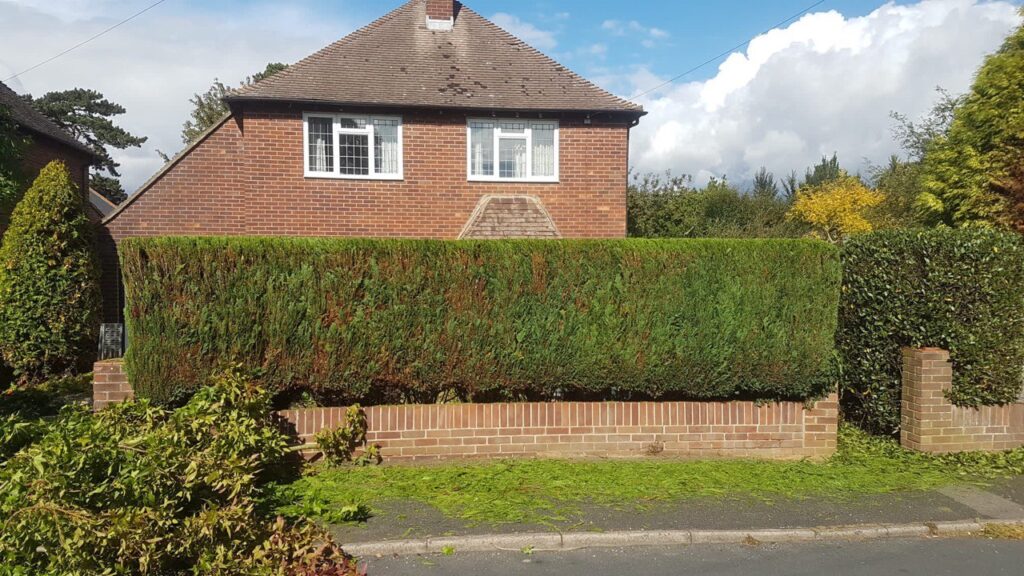Introduction: Trees are a vital part of any landscape, providing shade, beauty, and environmental benefits. Regular pruning is essential to keep them looking their best and maintaining their health. At LM Tree Surgery Bognor Regis, we understand the importance of proper tree care and the techniques needed to enhance their natural beauty. In this blog post, we’ll guide you through the steps of effective tree pruning to ensure your trees thrive and look magnificent all year round.
- Understand the Basics of Tree Pruning
Tree pruning involves selectively removing branches to improve the tree’s structure, health, and appearance. The primary goals are to remove dead or diseased wood, control the tree’s shape, and allow more light and air to penetrate the canopy. Before you start, it’s essential to understand the basic principles and the right time to prune each tree species.
- Choose the Right Tools
Using the correct tools is crucial for effective pruning. Essential tools include:
- Secateurs for small branches.
- Loppers for medium-sized branches.
- Pruning saws for larger branches.
- Pole pruners for high, hard-to-reach branches. Ensure your tools are sharp and clean to make precise cuts and prevent the spread of disease.
- Identify the Branches to Prune
Before making any cuts, carefully assess the tree to identify which branches need pruning. Look for:
- Dead or Diseased Branches: Remove these to prevent the spread of disease and improve the tree’s appearance.
- Crossing or Rubbing Branches: These can cause wounds and should be removed to prevent damage.
- Water Sprouts and Suckers: These are fast-growing shoots that can sap the tree’s energy and should be removed.
- Weak or Narrow Crotches: Branches with weak attachments can pose a hazard and should be pruned.
- Make Proper Cuts
Making the right cuts is essential to the tree’s health and appearance. Follow these guidelines:
- Cut at the Right Angle: Always cut just outside the branch collar (the swollen area where the branch meets the trunk) to allow proper healing.
- Three-Cut Method for Large Branches: To prevent tearing the bark, use the three-cut method for larger branches. Make an undercut about 15 inches from the trunk, followed by a top cut a few inches further out. Finally, remove the remaining stub.
- Don’t Over-Prune: To prevent stress, avoid removing more than 25% of the tree’s canopy in a single year.
- Consider the Tree’s Natural Shape
When pruning, aim to enhance the tree’s natural form rather than imposing an unnatural shape. Each tree species has its unique growth pattern, and pruning should respect and enhance this natural architecture. Symmetry and balance are key to a tree’s visual appeal.
- Prune at the Right Time
Timing is crucial for effective pruning. Most trees are best pruned during their dormant season (late winter to early spring) when they are not actively growing. This minimises stress and allows the tree to heal before the growing season begins. However, some species, like flowering trees, may require pruning after their blooming period.
- Hire a Professional Arborist
Pruning can be complex, especially for larger trees or those requiring significant shaping. Hiring a professional arborist ensures that your trees receive the best care. At LM Tree Surgery Bognor Regis, our experienced arborists can handle all your pruning needs, from routine maintenance to complex shaping and hazard removal.
- Regular Maintenance
Pruning is not a one-time task but an ongoing part of tree care. Regular inspections and maintenance ensure your trees remain healthy and beautiful. Schedule annual check-ups with a professional arborist to keep your trees in top condition.
Conclusion: Proper tree pruning enhances the natural beauty and health of your trees. By understanding the basics, using the right tools, and making precise cuts, you can maintain your trees’ structure and appearance. However, for the best results, consider hiring professional arborists.
Call us on: 01243 973 494
Click here to find out more about LM Tree Surgery Bognor Regis
Click here to complete our contact form and see how we can help you with your tree’s needs.

